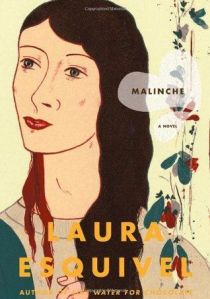 It’s been an amazing journey through seven novels with Matthew Shardlake, the Tudor lawyer who is also my favourite detective in historical fiction since Brother Cadfael. I’ve read all six of the previous books, although I’ve just realized in looking back that I didn’t write reviews of all of them, which is often the case with books in a series. However, Tombland may well turn out to be the final Shardlake novel, so it’s worth its own review.
It’s been an amazing journey through seven novels with Matthew Shardlake, the Tudor lawyer who is also my favourite detective in historical fiction since Brother Cadfael. I’ve read all six of the previous books, although I’ve just realized in looking back that I didn’t write reviews of all of them, which is often the case with books in a series. However, Tombland may well turn out to be the final Shardlake novel, so it’s worth its own review.
Shardlake started the series back in Dissolution as an ardent Protestant reformer working for Thomas Cromwell. The “dissolution” of that title was Henry VIII’s dissolution of the monasteries after his break with Rome, and after Shardlake is sent to help with closing down one particular monastery (and, of course, solve a mystery while he’s there), he emerges with his faith shaken, no longer sure what he believes.
After several years of adventures, the older Shardlake (he’s 47 and white-haired in Tombland) is still unsure what he believes about God and the church, but he’s learned to be extremely wary of men in power. Old King Henry is dead, as is Queen Catherine Parr, whom Shardlake served with great devotion. Now he works for the Lady Elizabeth, who nobody imagines will be the future queen, during the short reign of her brother Edward VI. Shardlake goes to Norfolk on a commission for Elizabeth, investigating a distant relative of hers who has been accused of murdering his wife. While there, he becomes caught up in a massive peasant revolt and finds himself, once again, questioning his loyalties at the same time as he solves the mystery.
Shardlake is forever an outsider — physically disabled, mentally brilliant; poised between social classes as a lawyer risen to “gentleman” status from humble roots; a man deeply devoted to his friends but without love or a family of his own. All of those qualities are at their keenest in Tombland, throughout the vividly described weeks when he is half-prisoner, half-supporter in the rebel camp outside Norwich. (For readers who, like me, love a good Afterword at the end of a historical novel explaining the background, there’s a meaty 50-page essay discussing the revolt in great detail at the end of Tombland).
But also, at the end of Tombland, there’s Shardlake — once again alone, to some degree, and poised as always between worlds, a skeptic in a world of fervent believers. Before this book came out, the extremely private C.J. Sansom revealed that he has terminal cancer, which has led most readers to suspect that this will likely be the last Shardlake book. While Sansom is not the type of writer and Shardlake not the type of character to leave everything tied up neatly with a bow at the end, Tombland’s bittersweet ending leaves the reader with a little hope for Shardlake’s later years, as well as enough interesting loose ends that, if the author should be granted a few more years and another book, there’s always more mysteries to be solved.


 Like a lot of people who love both dogs and Twitter, I became a fan of Blair Braverman and her dog team long before they ran this year’s Iditarod, through Blair’s great online storytelling about her wonderful dogs. Given how much I enjoy her writing when it’s broken up into 280-character bites, it’s surprising I waited as long as I did to read her memoir. A few bad reviews on Goodreads put me off a bit, but I realize after reading it that the people who gave it bad reviews were expecting a different kind of book.
Like a lot of people who love both dogs and Twitter, I became a fan of Blair Braverman and her dog team long before they ran this year’s Iditarod, through Blair’s great online storytelling about her wonderful dogs. Given how much I enjoy her writing when it’s broken up into 280-character bites, it’s surprising I waited as long as I did to read her memoir. A few bad reviews on Goodreads put me off a bit, but I realize after reading it that the people who gave it bad reviews were expecting a different kind of book.




